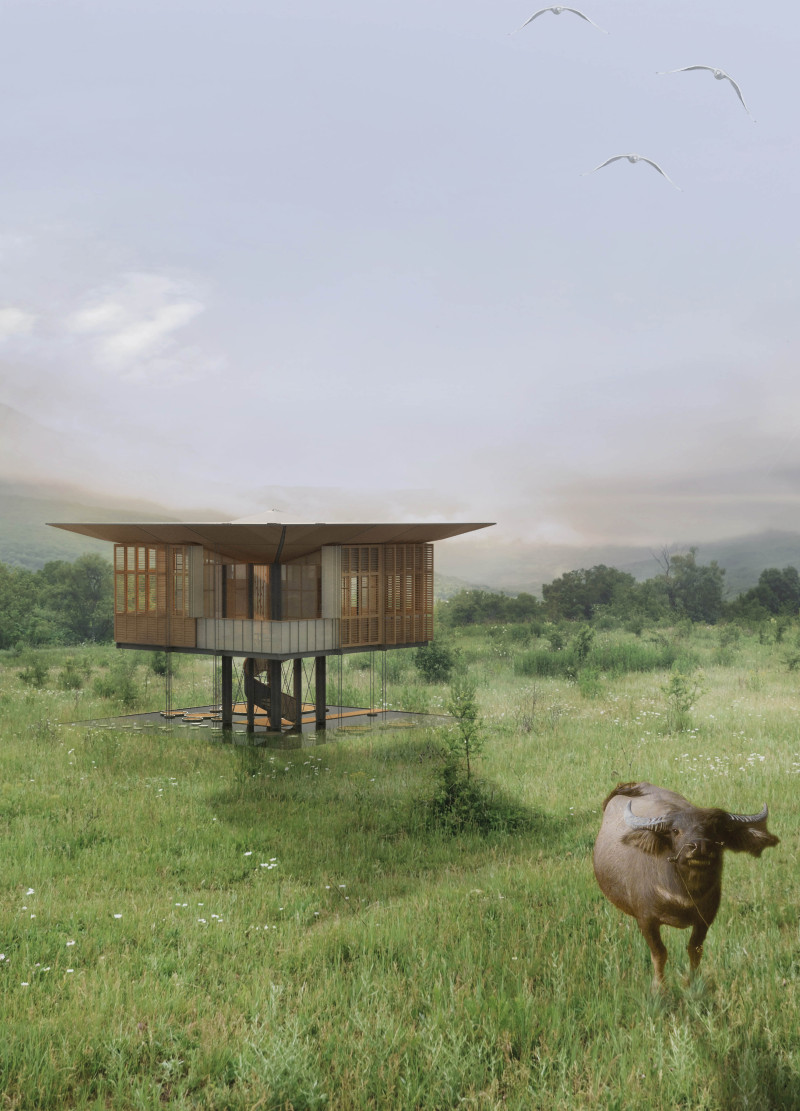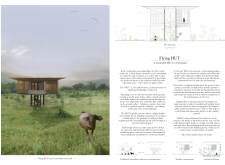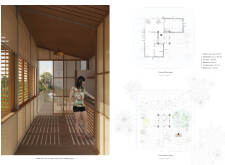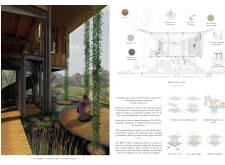5 key facts about this project
The Flying HUT is located in the countryside of Kep, Cambodia, surrounded by greenery and mountains. The design serves as a retreat focused on relaxation and mindfulness. The concept blends traditional elements of Cambodian architecture with modern sustainable practices. This approach aims to create a space that allows visitors to connect with nature while enjoying comfort and tranquility.
Design Concept
The design reinterprets traditional Cambodian architecture by elevating the structure on piles. This raises the first floor and creates usable space below. A central core supported by cables allows the HUT to be suspended, which optimizes airflow and provides panoramic views. The approach removes barriers between the inside and outside, creating a light-filled environment.
Modularity and Adaptability
Modularity plays a key role in the design of the Flying HUT. The layout can change based on the occupants’ needs. Pivoting panels allow sunlight to be controlled, enhancing energy efficiency and providing comfort. This feature adds flexibility to the living spaces and encourages a dynamic relationship between the interior and the changing light throughout the day.
Structural Materials
The materials used include concrete for the foundations, metal for the load-bearing structure, and wood for the floors, walls, and facades. This selection aligns with local building traditions, ensuring a connection to the environment. The lightweight construction not only supports easy assembly but also minimizes environmental impact.
Design Integration
The roof slopes downwards, creating a unique profile that collects rainwater for use. This funnel shape connects the structure visually to the sky and provides practical benefits. Underneath, an open meditation space surrounded by water and plants reinforces the connection to nature. Features such as mosquito-proofing and natural repellents contribute to comfort, creating an inviting atmosphere for quiet reflection.
Rainwater collected flows into a landscaped basin, cooling the air and encouraging a peaceful environment. This thoughtful integration of elements achieves a harmonious relationship between the built space and the surrounding landscape.























































